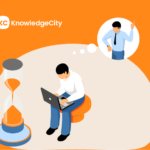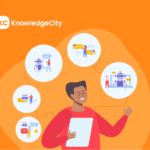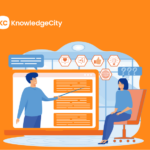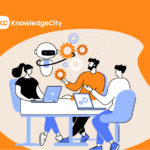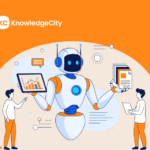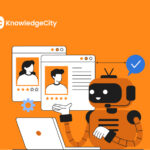Someone in your team has started avoiding certain tasks. They’ve stopped volunteering for things they once handled with ease. They take longer to respond to updates involving new systems. When digital tools come up, they stay quiet. Not because they’ve checked out, but because they’re uncertain. And they hope no one sees it.
This is how early signs of struggle begin to appear when digital skills gaps widen. It’s not disruptive or confrontational. It shows up as hesitation, withdrawal, or discomfort in situations that used to feel familiar. Often, these changes are misread as disinterest. In reality, they reflect a growing sense of disconnection.
If this goes unrecognized, it doesn’t stay small. Quiet discomfort eventually leads to performance dips, loss of confidence, and decisions to leave roles they once cared deeply about.
In this blog, we explore how HR and L&D teams can use intentional strategies and responsible use of AI to identify, understand, and support employees who are quietly falling behind during digital transitions.
The Signs of Quiet Detachment Often Go Unnoticed
The employees who feel left out of AI transformation rarely say so aloud. They tend to be conscientious, loyal, and careful not to show vulnerability. Their discomfort surfaces as hesitation. They participate less. They decline optional learning. They start doing only what is asked.
Without context, these behaviors can be misread as disinterest or resistance. But something very different is happening under the surface.
Many of these individuals come from roles built on precision, routine, or expertise that took years to build. When automation shifts the foundation of their job, they are not sure where to stand.
Others are mid-career professionals who didn’t grow up alongside technology. They were never given structured pathways to learn. Now, because tools are evolving so rapidly, they struggle to keep up without losing face.
Some are highly knowledgeable but have never been asked to make decisions in partnership with software. Their skills are strong, but their digital fluency was never cultivated.
The risk is not that these people will fail. The risk is that they will quietly step aside.
Reskilling Won’t Work Without Rebuilding
When organizations introduce new tools, the first response is usually technical training. Sessions are held. Portals are updated. Platforms are populated with courses. But those feeling left behind are often not lacking information. They are lacking grounding.
There are three barriers that training alone cannot remove:
This is why many training programs show high completion but low behavior change. The conditions for growth have not been rebuilt.
The Foundation Is Not Skills. It’s Psychological Safety.
Before any real upskilling can happen, employees need space to reorient. They need to explore without risk. They need to feel seen in their current state, not evaluated by their speed of adoption.
A learning environment that helps people re-engage includes:
One way to re-engage employees displaced by AI is to offer structured opportunities to rebuild confidence through cross-functional experience. Job rotation helps employees adapt to new demands, especially when combined with learning pathways that support real-time skill growth.
This isn’t about lowering expectations. It’s about giving employees the grounding they need to move forward with trust in themselves.
People Need To See Where They’re Going, Not Just What To Learn
Even when employees are willing to learn, many feel blocked by a deeper question: What am I preparing for?
Job descriptions often remain unchanged while the work is shifting underneath. Employees are asked to adopt tools without knowing how their contribution is evolving. The outcome is hesitation, not because of resistance, but because of confusion.
HR and L&D can offer direction through:
When people understand how their work is changing, they stop fearing the shift. They begin to move with it.
Managers Can Either Amplify Fear or Create Safety
Frontline managers play the most critical role in determining whether employees retreat or re-engage. But many are unequipped to recognize quiet disengagement. Even fewer know how to respond.
Without guidance, a manager may interpret silence as a sign of disinterest or low performance. They may push harder, assign more tools, or withdraw opportunities. What was uncertainty becomes distance.
HR can help managers reframe their role with:
- Conversation starters designed to surface uncertainty without making it feel like a problem
- Behavioral signals training so managers can detect when withdrawal is a sign of confusion or fear
- Separation of learning from evaluation so employees are not graded while they are still building
- Support playbooks to guide individual development conversations without placing blame
When a manager creates a moment of safety, one employee often finds the courage to begin again.
Change Must Include The People Most Affected
Many digital transformation plans focus on rollout schedules, integration milestones, and training deadlines. What often gets missed is the employee experience during these changes, especially when it comes to using new tools effectively. For example, AI tools are being adopted faster than teams are being trained to use them well. If employees lack prompt fluency, even the best tools won’t lead to meaningful results. You can explore practical strategies for training your team to use AI more effectively through better prompts to help them regain confidence and improve outcomes during transitions.
Support must not be reactive. It should be part of the way change is introduced.
That includes:
When employees see that their voice shapes the system, they stop feeling like they are being evaluated. They begin to believe they are part of the future being built.
What You Measure Reveals What You Value
Many organizations measure success by adoption rates and course completions. But these numbers miss the emotional and cognitive shifts that matter most.
To truly see who is moving forward and who is falling back, HR teams need to track:
- Employee sentiment before, during, and after change programs
- Manager observations of increased confidence, initiative, or participation
- Re-engagement signals such as voluntary return to learning or new tool usage over time
- Clarity indicators such as employee understanding of role direction and future value
These insights tell you whether the change is landing with people or just being processed by systems.
The Cost of Exclusion Is Invisible at First
When employees feel uncertain, they often say nothing. They stay in their roles, perform the basics, and go quiet. Over time, they become harder to promote, harder to retain, and easier to overlook. Talent is lost, not because it failed, but because no one helped it adapt.
AI transformation does not only require infrastructure. It requires care. HR and L&D shape whether transformation builds strength or leaves people behind. Their choices decide if progress is something employees can take part in or something that happens without them. When change is designed with care, it doesn’t just move the organization forward; it brings its people with it.
Subscribe to Our Newsletter
Join 80,000+ Fellow HR Professionals. Get expert recruiting and training tips straight
to your inbox, and become a better HR manager.
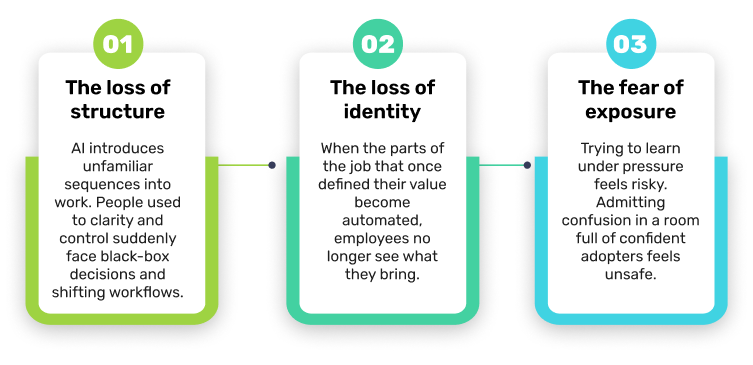
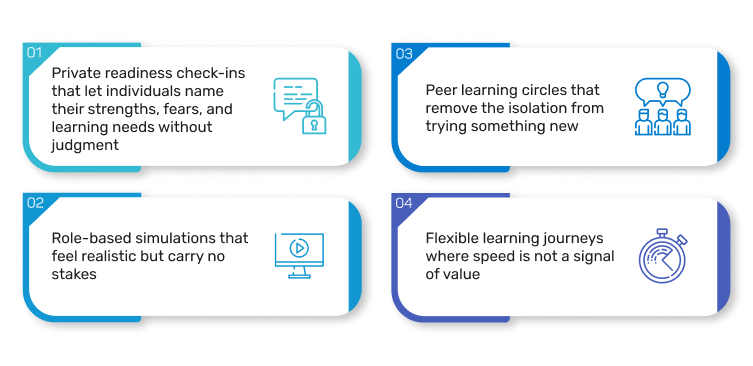
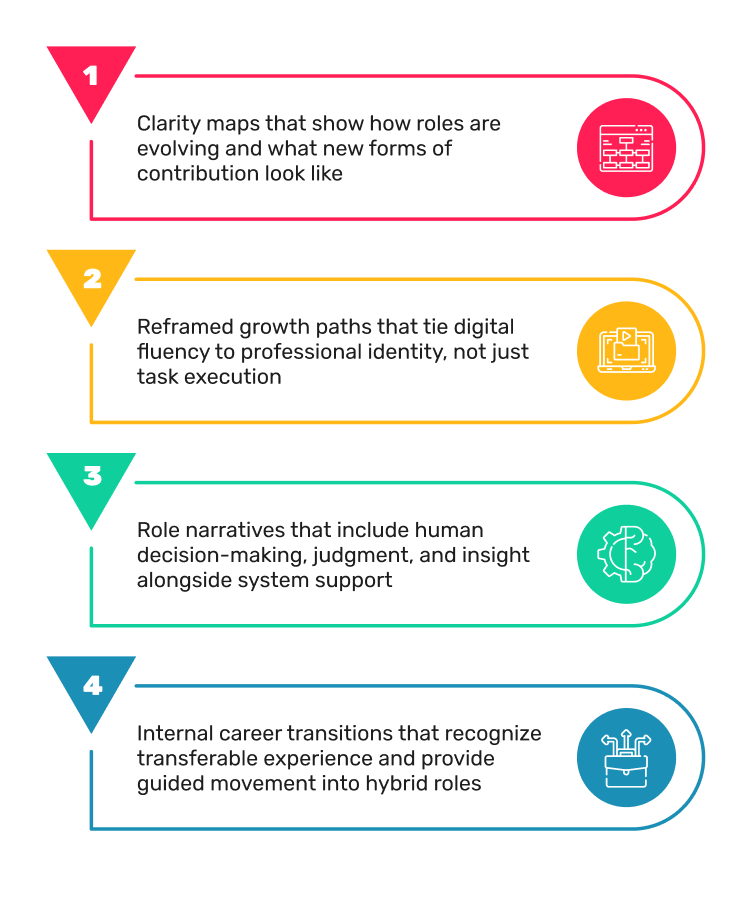


 KnowledgeCity
KnowledgeCity 